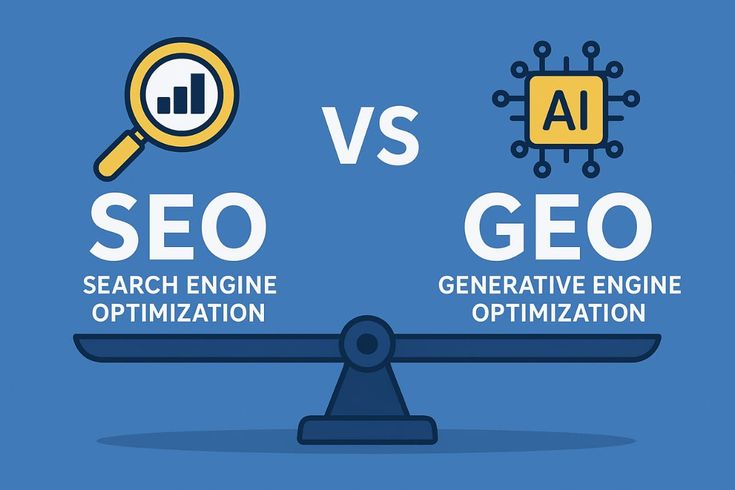Digital marketing keeps evolving, and so do the strategies businesses use to stay visible online. For years, Search Engine Optimization (SEO) has been the go-to method for driving organic traffic. But here’s the truth: SEO alone is no longer enough. To win in 2025 and beyond, you need to understand the power of AEO (Answer Engine Optimization) and GEO (Generative Engine Optimization)—and how all three work together to bring unstoppable traffic to your business.
Let’s break this down.
- What is SEO?
SEO (Search Engine Optimization) is the process of optimizing your website so it ranks higher on search engines like Google and Bing.
- It includes on-page SEO (keywords, meta tags, content quality, internal linking),
- off-page SEO (backlinks, authority, social signals), and
- technical SEO (site speed, mobile-friendliness, crawlability).
The goal of SEO is to get more organic traffic from people searching for solutions. For example, if you own a bakery in Dehradun, good SEO helps your website appear when someone types “best cakes in Dehradun.”
But SEO is getting crowded. Everyone is doing it, and search algorithms are changing faster than ever. That’s where AEO and GEO come in.
- What is AEO?
AEO (Answer Engine Optimization) is all about optimizing content for answer engines like Google’s featured snippets, voice assistants (Alexa, Siri, Google Assistant), and AI chatbots.
Think about it—when you ask your phone, “What’s the best time to post on Instagram?” you don’t get a list of 10 blue links anymore. You get one direct answer. That’s AEO in action.
How to optimize for AEO:
- Create concise, to-the-point answers in your content.
- Use structured data (schema markup).
- Add FAQs to your blogs.
- Focus on natural language and conversational tone.
AEO ensures your brand is the one giving the answer, not just buried in search results.
- What is GEO?
GEO (Generative Engine Optimization) is the new player in town. With AI-powered search engines like ChatGPT Search, Perplexity AI, and Gemini, people are no longer just searching on Google. Instead, they ask AI chatbots, which generate answers by pulling information from multiple sources.
GEO means optimizing your content so it shows up in these AI-generated responses.
How to optimize for GEO:
- Publish high-quality, trustworthy, and authoritative content.
- Get mentions and citations from credible websites.
- Use long-tail, conversational keywords that match how people talk.
- Write in-depth, context-rich content (AI loves context).
In short, GEO prepares your business for the AI-first world of search.
- SEO vs. AEO vs. GEO – Key Differences
| Factor | SEO | AEO | GEO |
| Focus | Ranking in search engines | Being the direct answer | Being cited in AI-generated responses |
| Tools | Google, Bing | Voice search, featured snippets | ChatGPT, Gemini, Perplexity |
| Content Style | Keyword-focused | Concise, Q&A format | Context-rich, conversational |
| Future Proofing | Essential, but traditional | Growing with voice + smart devices | Emerging with AI-driven search |
- How They Work Together to Boost Traffic
Here’s where the magic happens—SEO, AEO, and GEO aren’t competitors; they’re teammates.
- SEO builds the foundation. It ensures your website is optimized, crawlable, and discoverable. Without SEO, your content may never be found.
- AEO ensures you don’t just get clicks, but you also own the answer box—whether it’s Google snippets, Siri, or Alexa. That builds trust and authority.
- GEO makes sure your content shows up in AI-generated search results, so when someone asks ChatGPT or Gemini for advice, your brand gets recommended.
Imagine this:
- A customer searches on Google → your blog ranks (SEO).
- They ask Alexa → your answer comes up (AEO).
- They check ChatGPT → your content is cited in the generated response (GEO).
That’s triple visibility across platforms.
- Why Businesses Need All Three in 2025
- User behavior is changing: People use voice search, AI assistants, and traditional search interchangeably.
- Competition is insane: If you only focus on SEO, someone else will win the AEO and GEO battles.
- Future-proofing matters: Google is moving toward AI-generated search results (like “Search Generative Experience”). Ignoring AEO and GEO is like ignoring mobile optimization 10 years ago—you’ll get left behind.
- Final Thoughts
SEO brought us here, but it won’t take us forward alone. The real winners in 2025 will be the brands that understand the trifecta of SEO, AEO, and GEO.
- SEO makes you visible.
- AEO makes you the authority.
- GEO makes you future-proof.
When these three strategies work together, your traffic doesn’t just grow—it compounds across search engines, voice assistants, and AI platforms.
If you want sustainable growth, stop thinking of SEO as a solo act. Think of it as part of a digital orchestra where SEO, AEO, and GEO play in harmony to create the perfect melody of visibility, authority, and conversions.






